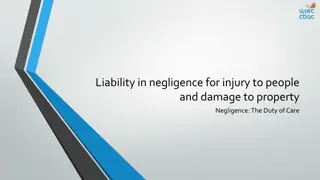Understanding Liability in Negligence for Psychiatric Injury: Primary and Secondary Victims
Psychiatric damage resulting from negligence involves injury to the mind rather than the body, requiring claimants to prove recognized psychiatric injury with medical evidence. Primary victims suffer physical or foreseeable physical and psychiatric injuries, while secondary victims experience psychiatric harm without direct physical danger. The Hillsborough disaster exemplifies cases where claims for nervous shock due to negligence were brought forth, as seen in Alcock v. Chief Constable of South Yorkshire Police (1992). The distinction between primary and secondary victims is illustrated through Robert Alcock's experience as a witness to a tragic event - making him a secondary victim.
Download Presentation

Please find below an Image/Link to download the presentation.
The content on the website is provided AS IS for your information and personal use only. It may not be sold, licensed, or shared on other websites without obtaining consent from the author. Download presentation by click this link. If you encounter any issues during the download, it is possible that the publisher has removed the file from their server.
E N D
Presentation Transcript
Liability in negligence for injury to people and damage to property Psychiatric Injury: primary and secondary victims
Learning Objectives By the end of the session you should be able to: 1. Explain what a primary victim is. 2. Explain what a secondary victim is.
What is Psychiatric Damage? Psychiatric damage is injury to the mind rather than the body Psychiatric injury is sometimes referred to as nervous shock Claimants must show using medical evidence that they have a recognised psychiatric injury Claimants will not succeed in a claim for damages for normal grief or distress
Primary and Secondary Victims A primary victim is: o a person who either suffers physical injury as a result of another person s negligence or o where it was reasonably foreseeable that he/she could have been physically injured as a result of another person s negligence and as a result he/she have suffered a psychiatric injury (e.g. a person is involved in a car accident and receives no physical injuries but develops a serious psychiatric condition). A secondary victim is a person who suffers psychiatric injury as a result of another person s negligence but was not exposed to danger. There are several other conditions which need to be met to be classified as a secondary victim.
Hillsborough Disaster 15thApril 1989 Use your multi-media devices to research the Hillsborough disaster. 1. Where did the disaster take place? 2. What caused the disaster? 3. How many people died? 4. Was anyone negligent in causing the disaster? https://www.youtube.com/watch?v=MNS26Oj9B4o
Alcock v Chief Constable of South Yorkshire Police (1992) This case concerned claims by ten plaintiffs* brought against the South Yorkshire Police . All ten claimed damages for nervous shock resulting in psychiatric illness which they alleged was caused by the experiences inflicted on them by the Hillsborough disaster. [* The term plaintiff rather than claimant was used prior to 1999.]
Was Robert Alcocka Secondary Victim? Robert Alcock lost his brother-in-law. He was in the West Stand, with his nephew, the brother-in-law's son. He witnessed the scenes from the West Stand and was sickened by what he saw but was not then concerned for his brother-in-law whom he believed to be in the stand because, on the way to the match, he had swapped a terrace ticket which he held for a stand ticket. Tragically, however, the brother-in-law had, unknown to the plaintiff, returned to the terrace. After the match the plaintiff left the ground for a rendezvous with the brother-in-law who did not arrive. He and his nephew became worried and searched without success. At about midnight they went to the mortuary where the plaintiff identified the body which was blue with bruising and the chest of which was red. The sight appalled him .... Alcockv Chief Constable of South Yorkshire [1991] UKHL 5 (28 November 1991) http://www.bailii.org/uk/cases/UKHL/1991/5.html
Was Brian Harrison a Secondary Victim? Brian Harrison, was at the ground. He was in the West Stand. He knew both of his brothers would be in the pens behind the goal. He saw the horrifying scene as it developed and realised that people in the two pens had been either killed or injured. When, six minutes after the start, the match was abandoned he tried to find his brothers. He failed to do so. He stopped up all night waiting for news. At 6 a.m. he learnt that his family were setting off for Sheffield. At 11 a.m. he was informed by telephone that both his brothers were dead .... Alcock v Chief Constable of South Yorkshire [1991] UKHL 5 (28 November 1991) http://www.bailii.org/uk/cases/
Were Mr & Mrs CopocSecondary Victims? Mr. and Mrs. Copoclost their son. They saw the scenes on live television. Mrs. Copocwas up all night. She was informed by police officers at 6 a.m. that her son was dead. Mr. Copocwent to Sheffield at 4 a.m. with his nephew. He was informed at 6.10 a.m. of his son's death and later identified the body .... Alcockv Chief Constable of South Yorkshire [1991] UKHL 5 (28 November 1991) http://www.bailii.org/uk/cases/
Was Brenda Hennessey a Secondary Victim? Brenda Hennessey lost her brother. She watched television from about 3.30 p.m. and, although she then realised there had been deaths and injuries in the pens, she was not worried because she believed her brother to be in a stand seat. However, at about 5 p.m. she learnt from her brother's wife that he had a ticket in the LeppingsLane terrace. At 6 p.m. she learnt from members of the family who had gone to Sheffield that her brother was dead. Alcock v Chief Constable of South Yorkshire [1991] UKHL 5 (28 November 1991) http://www.bailii.org/uk/cases/
Was Denise Hough a Secondary Victim? Denise Hough lost her brother. She was 11 years older than her brother and had fostered him for several years although he no longer lived with her. She knew he had a ticket at the LeppingsLane end and would be behind the goal. She was told by a friend that there was trouble at the game. She watched television. At 4.40 a.m. she was informed by her mother that her brother was dead. Two days later, on 17 April, she went with her mother to Sheffield and confirmed an earlier identification of the body. His face was bruised and swollen. Alcock v Chief Constable of South Yorkshire [1991] UKHL 5 (28 November 1991) http://www.bailii.org/uk/cases/UKHL/1991/5.html
Was Stephen Jones a Secondary Victim? Stephen Jones lost his brother. He knew that his brother was at the match. He watched television and saw bodies and believed them to be dead. He did not know his brother was dead until 2.45 a.m. when, having gone to the temporary mortuary at Hillsborough, he found his parents there in tears .... Alcock v Chief Constable of South Yorkshire [1991] UKHL 5 (28 November 1991) http://www.bailii.org/uk/cases/
Was Catherine Jones a Secondary Victim? Catherine Jones lost a brother. She knew he was at the match and would normally be behind the goal. At 3.30 p.m. whilst shopping she heard that there was trouble at the match and at 4.30 p.m. that there were deaths. At 5.15 p.m. she went home and heard on the radio that the death toll was mounting. At 7 p.m. a friend telephoned from Sheffield to say that people at the hospital were describing someone who might be her brother. At 9 p.m. her parents set off for Sheffield. At 10 p.m. she watched recorded television in the hope of seeing her brother alive. She thought, mistakenly, she saw him collapsed on the pitch. At 5 a.m. her father returned from Sheffield and told her that her brother was dead. Alcockv Chief Constable of South Yorkshire [1991] UKHL 5 (28 November 1991) http://www.bailii.org/uk/cases/
Was Joseph Kehoe a Secondary Victim? Joseph Kehoe lost a 14-year-old grandson, the son of his daughter and her divorced husband. Unknown to the grandfather the boy had gone to the match with his father. In the afternoon the plaintiff heard on the radio that there had been deaths at Hillsborough. He later saw scenes of the disaster on recorded television. He later still learnt that his grandson was at the match. He became worried. At 3 a.m. he was telephoned by another daughter to say that both the boy and his father were dead .... Alcock v Chief Constable of South Yorkshire [1991] UKHL 5 (28 November 1991) http://www.bailii.org/uk/cases/UKHL/1991/5.html
Was Alexandra Penk a Secondary Victim? Alexandra Penk lost her fianc e, Carl Rimmer. They had known each other for four years and recently became engaged. They planned to marry in late 1989 or at the latest early in 1990. She knew he was at the match and would be on the Leppings Lane terraces. She saw the television in her sister's house and knew instinctively that her fianc e was in trouble. She continued to watch in the hope of seeing him but did not do so. She was told at about 11 p.m. that he was dead. Alcock v Chief Constable of South Yorkshire [1991] UKHL 5 (28 November 1991) http://www.bailii.org/uk/cases/UKHL/1991/5.html
Alcockv Chief Constable of South Yorkshire Police (1992) It was held that to be a secondary victim, a claimant must witness the event with his/her own unaided senses or hear the event in person or view its immediate aftermath. In other words the claimant must be in close physical proximity to the event. This means persons who witness the event on television, hear it on the radio or are informed about the event from a third party are unlikely to be classified as secondary victims.
Question How many of the plaintiffs were at the stadium?
Question How many of the plaintiffs were at the stadium? Answer: only two (Robert Alcockand Brian Harrison)
Alcockv Chief Constable of South Yorkshire Police (1992) It was held that the claimant must usually show a sufficiently proximate relationship to the victim. This is often described as a "close tie of love and affection". Such ties are presumed to exist between parents and children, spouses and fianc s. This means other relations, including between siblings (e.g. brothers) must prove their ties of love and affection.
Sufficiently Proximate Relationship Lord Keith: Brian Harrison lost two brothers, while Robert Alcock lost a brother-in-law and identified the body at the mortuary at midnight. In neither of these cases was there any evidence of particularly close ties of love or affection with the brothers or brother-in-law. Lord Ackner: The quality of brotherly love is well known to differ widely - from Cain and Abel to David and Jonathan. Lord Jauncey: Only two plaintiffs, Mr. and Mrs. Copoc, lost a son, but they saw the disaster on television None of the other plaintiffs who lost relatives sought to establish that they had relationships of love and affection with a victim comparable to that of a spouse or parent.
Alcockv Chief Constable of South Yorkshire Police (1992) It was held that it must be proved that it was reasonably foreseeable that the claimant would suffer psychiatric damage. The closer the tie between the plaintiff and the victim, the more likely it is that he would succeed in showing that the psychiatric damage was reasonably foreseeable. This means that reasonable foreseeability depends on establishing a sufficiently proximate relationship.
Unconnected Bystanders The House of Lords did hint that a person with no sufficiently proximate relationship may be classed as a secondary victim in exceptional circumstances. Lord Keith: The case of a bystander unconnected with the victims of an accident is difficult. Psychiatric injury to him would not ordinarily, in my view, be within the range of reasonable foreseeability, but could not perhaps be entirely excluded from it if the circumstances of a catastrophe occurring very close to him were particularly horrific.
Discussion Do you agree with the decision in Alcock? Why do you think the courts have tried to limit claims for psychiatric damage?
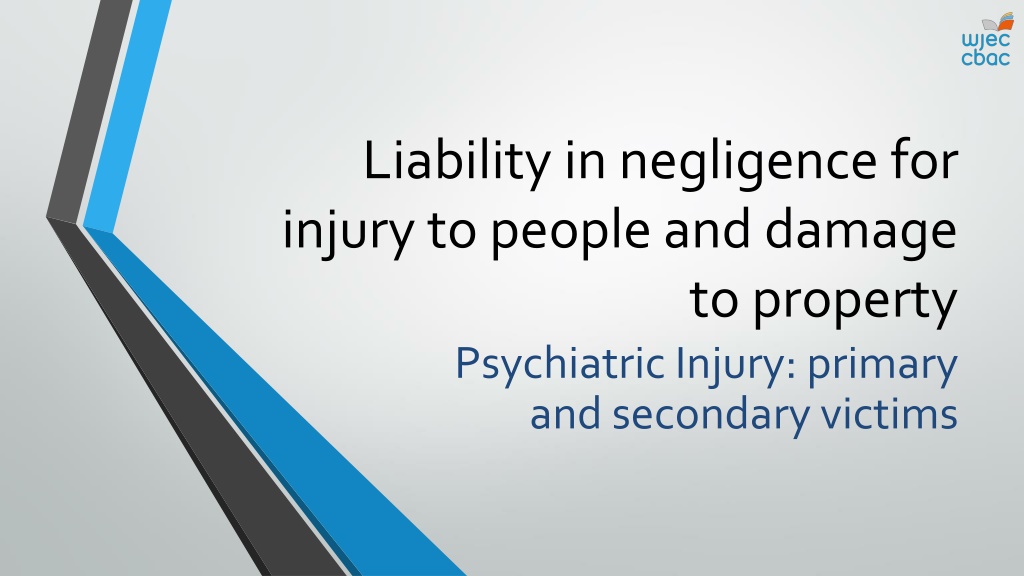

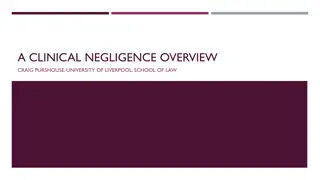



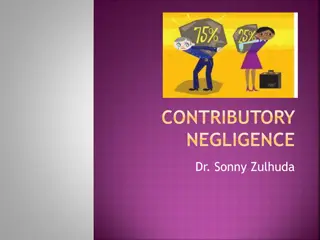
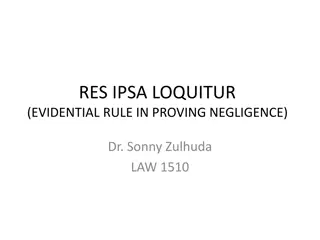
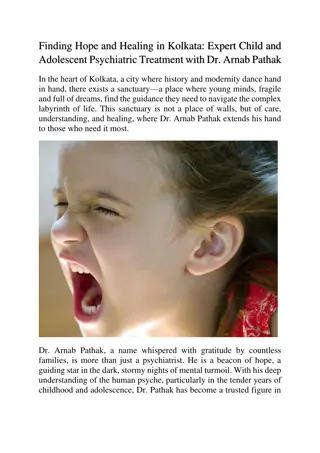

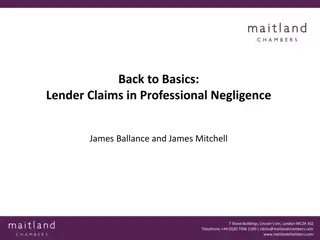

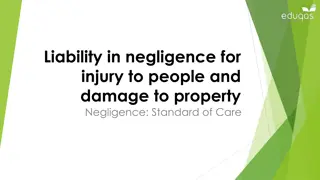
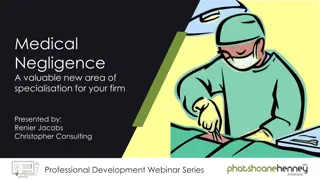

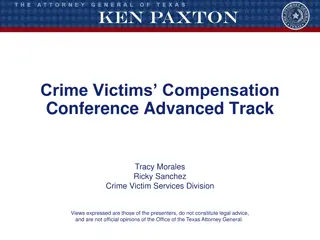
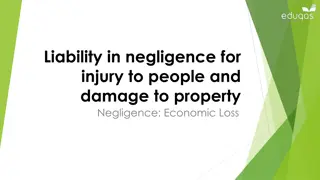
![Understanding Negligence Liability in Donoghue v. Stevenson [1932]](/thumb/198881/understanding-negligence-liability-in-donoghue-v-stevenson-1932.jpg)
